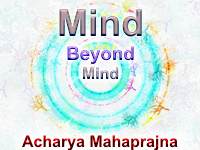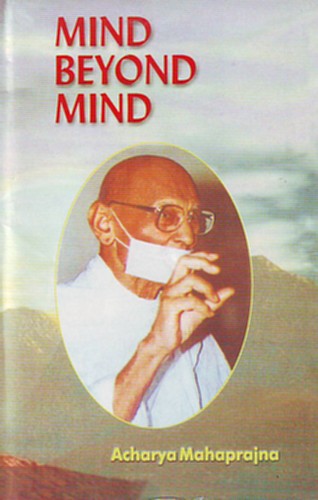
.
Every student of the Jain philosophy knows that there are ten Pranas (vital force) in the human body. He also knows the functions of these Pranas. The Jain discipline is based on Ahimsa. The term used for Himsa is Pranatipata (separation of Prana from the body). The living organism is called Pram one who has vital force and cannot live without it. The soul assumes the form of a living being with the help of the vital force. The Pranas are the chief sources of life. Let us understand the value of Pranas from the point of view of Sadhana. The vital energy flows throughout the body. It is the driving force of life. As a matter of fact there are not ten Pranas, but only a single Prana. It is on the basis of its ten functions that we speak of ten Pranas. There are ten functional centres of the vital force in the body. All the living beings whether they possess one or five sense organs, possess the vital force. The ten-fold classification of the vital force does not affect the unity of its power.
The ten centres are the five sense organs, mind, speech, the body, breath, and Ayusya (the span of life). From where does the vital energy emerge? The source of all the fends of Prana lies in the brain. There are separate brain centres for hearing, smelling, breathing, thinking, knowledge etc. The human body has six Paryaptis or subtle material sheaths which become activated when the vital fluid enters into them. The Paryaptis are the cause and the vital force is the effect. It is very difficult to define Prana. We often confuse it with the air we breathe. But the two are not one but two separate things. The air we breathe (Prana Vayu or oxygen) is not the whole of Prana. We inhale oxygen and exhale carbon dioxide and not Prana. We perform Pranayama (regulation of breathing) not Prana. Prana is the subtle currant in the body, which propels it. It comes through the Taijasa body from the soul energy. The Prana Vayu (oxygen) is not directly connected with consciousness. The*entire heat of the body is generated by the Taijasa body. This body is closely connected with life. The vital force is born of a combination of consciousness and the Taijasa body. The currents of consciousness flow through Prana. They do not flow through oxygen. Prana is a compounded energy.
There is a centre in the human body just below the end of the Susumna channel. This centre generates the Prana energy and makes it flow. This flow goes through the Susumna channel and, passing through various parts of the body, reaches the brain. It flows from its centre upwards and not downwards. The physical and mental health of the human organism depends upon the upward flow of the Prana energy. When this energy grows thin, it produces physical and mental ill health.
The aim of Prana Sadhana is to carry the Prana energy to the knowledge centres in the brain. The Prana air is like the air pumped out by the bellows of the ironsmith. It keeps the fire in the oven kindled. The more the air released by the bellows, the more will be the fire. Prana Vayu keeps the vital energy strong and active. The more we take in oxygen, the purer will be the vital energy. The heart is the organ of the circulation of blood in the body. This blood is boosted by the lungs. The heart and the lungs are the means of the circulation of blood. Oxygen is a kind of fuel used in the refinement of blood and releasing carbon from it. In the absence of the required supply of oxygen blood becomes polluted and affects health adversely. Thus oxygen refines blood and blood supplies energy to the body. That is why it is closely connected with the vital energy in the body. We cannot live without oxygen. The first step in the exercise of Pranayama is to ensure a sufficient supply of oxygen in the lungs. This can be done by long breathing.
Pranayama is a means of regulating the intake of oxygen. Thus we have three principles: Prana, Prana Vayu and Pranayama. There can be no sufficient intake of oxygen without Pranayama and there can be no oxidization of the vital force without oxygen. Pranayama is, therefore, an important means of supplying oxygen to the flow of vital energy. It regulates the supply of oxygen. The practitioner should have knowledge of how much oxygen is needed and how deep it is flowing at a particular point of time, because it is the Prana Vayu, which activates the vital force. The Yogis work wonders with the help of the vital energy. The Taijasa body produces two forces, Anugraha (grace) and Nigraha (curse): The latter is also a highly destructive force. The former is a benign and creative force.
All the centres of the body connected with the vital force are located in the brain. The vital energy enters into the brain through two channels, the one outer, and the other inner. The vitality and normal strength of the body depend on the inflow of the vital energy through the outer channel. It activates the ten Prana centres and keeps the organism living. Another king of force is created in the body when the vital force begins to flow in the inner channel. The inner channel is called Mahavithi. This term has been used in the Acaranga Sutra. The aphorism 'Panaya Vira Mahavihim' probably refers to the pushing up of the vital force through the spinal channel. It is a very difficult task and only hardened practitioners can accomplish it. It produces excessive energy in the body.
The spiritual development of man depends on the amount of vital energy pumped into the knowledge centres in the brain, i.e. into the Sahasrara Cakra. If the vital energy flows downwards by being associated with the mind, it produces desires and predilections. The vital energy flows both upwards and downwards simultaneously. We should, therefore, train the mind to move upwards.
 Acharya Mahaprajna
Acharya Mahaprajna

